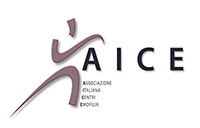Safety and efficacy of treatment with vitamin K antagonists in patients managed in a network of anticoagulation services or as routine general care

Submitted: 8 December 2021
Accepted: 21 March 2022
Published: 15 April 2022
Accepted: 21 March 2022
Abstract Views: 518
PDF: 192
Supplementary Files: 57
Supplementary Files: 57
Publisher's note
All claims expressed in this article are solely those of the authors and do not necessarily represent those of their affiliated organizations, or those of the publisher, the editors and the reviewers. Any product that may be evaluated in this article or claim that may be made by its manufacturer is not guaranteed or endorsed by the publisher.
All claims expressed in this article are solely those of the authors and do not necessarily represent those of their affiliated organizations, or those of the publisher, the editors and the reviewers. Any product that may be evaluated in this article or claim that may be made by its manufacturer is not guaranteed or endorsed by the publisher.
Most read articles by the same author(s)
- Daniela Poli, Emilia Antonucci, Gualtiero Palareti, Roberto Facchinetti, Pietro Falco, Giuseppina Serricchio, Teresa Lerede, Lucilla Masciocco, Paolo Gresele, Sophie Testa, Major bleedings in mechanical prosthetic heart valves patients on Vitamin K antagonist treatment. Data from the PLECTRUM Study , Bleeding, Thrombosis and Vascular Biology: Vol. 1 No. 2 (2022)
- Cristina Legnani, Michela Cini, Sophie Testa, Alberto Tosetto, Claudia Dellanoce, Stefania Bellesso, Giuseppe Carli, Ilaria Nichele, Laura Lissandrini, Serena Zorzi, Emilia Antonucci, Gualtiero Palareti, Evaluation of Coaguchek®Pro II coagulation testing device performance to assess direct oral anticoagulant action. The DOAC-CHECK study , Bleeding, Thrombosis and Vascular Biology: Vol. 1 No. 3 (2022)
- Daniela Poli, Walter Ageno, Emilia Antonucci, Salvatore Bradamante, Eugenio Bucherini, Paolo Chiarugi, Antonio Chistolini, Benilde Cosmi, Anna Falanga, Antonio Insana, Domenico Lione, Rosa Maria Lombardi, Giuseppe Malcangi, Rossella Marcucci, Giuliana Martini, Lucilla Masciocco, Carmelo Paparo, Daniele Pastori, Simona Pedrini, Vittorio Pengo, Pasquale Pignatelli, Andrea Toma, Sophie Testa, Gualtiero Palareti, Management of anticoagulation in atrial fibrillation patients in Italy: insight from the Atrial Fibrillation-Survey on Anticoagulated Patients Register (AF-START) , Bleeding, Thrombosis and Vascular Biology: Vol. 2 No. 2 (2023)
- Gualtiero Palareti, Paolo Prandoni, Cristina Legnani, Emilia Antonucci, Serena Zorzi, Alberto Tosetto, Lorenza Bertù, Sophie Testa, Vittorio Pengo, Walter Ageno, Ida Martinelli, Benilde Cosmi, Eugenio Bucherini, Daniela Poli, Rationale and design of a study on D-dimer use to stratify patients after a first unprovoked venous thromboembolism for their risk of recurrence: extended low-dose Apixaban given only to patients with positive D-dimer results , Bleeding, Thrombosis and Vascular Biology: Vol. 1 No. 1 (2022)
- Gualtiero Palareti, The diagnostic procedure for subjects with suspected pulmonary embolism. A recent comparison among the recommendations available from the international guidelines , Bleeding, Thrombosis and Vascular Biology: Vol. 3 No. 1 (2024)
- Vittorio Pengo, Luca Sarti, Emilia Antonucci, Stefania Di Agostino, Elisa Bison, Gentian Denas, Daniela Poli, Pier Luigi Meroni, Roberto Gerli, Antonella Radice, Gualtiero Palareti, on behalf of FIRMA group and START collaborators, Descriptive analysis of patients positive for anti-phospholipid antibodies included in two Italian registries , Bleeding, Thrombosis and Vascular Biology: Vol. 2 No. 3 (2023)
Similar Articles
- Benedetta Izzi, Simona Costanzo, Alessandro Gialluisi, Amalia De Curtis, Sara Magnacca, Teresa Panzera, Augusto Di Castelnuovo, Maria Benedetta Donati, Chiara Cerletti, Marc F. Hoylaerts, Giovanni de Gaetano, Licia Iacoviello, *on behalf of the Moli-sani Study Investigators, Platelet distribution width is associated with cardiovascular mortality in an adult general population , Bleeding, Thrombosis and Vascular Biology: Vol. 2 No. 3 (2023)
- Paolo Prandoni, Franca Bilora, Raffaele Pesavento, Giorgina Salgueiro, Angeles Blanco-Molina, Raquel Lòpez-Reyes, Manuel Monreal, and the RIETE Investigators, Treatment of venous thromboembolism in pregnancy: findings from the RIETE Registry , Bleeding, Thrombosis and Vascular Biology: Vol. 1 No. 2 (2022)
- Ilaria Nichele, Giuseppe Carli, Alberto Tosetto, Tailored therapy with turoctocog alfa pegol according to patient’s lifestyle and hemorrhagic phenotype: from clinical trial to real-life , Bleeding, Thrombosis and Vascular Biology: Vol. 3 No. 1 (2024)
- Paolo Simioni, Vittorio Pengo, Paolo Prandoni, Thrombosis and hemostasis at the University of Padua: a reappraisal on the occasion of its 800th year of history , Bleeding, Thrombosis and Vascular Biology: Vol. 1 No. 3 (2022)
- Vincenzo Sammartano, Adele Santoni, Elisabetta Zappone, Paola Calzoni, Daniela Fineschi, Eleonora Franceschini, Federico Caroni, Anna Sicuranza, Monica Bocchia, Luca Puccetti, A case of acquired factor XIII deficiency secondary to plasmablastic lymphoma , Bleeding, Thrombosis and Vascular Biology: Vol. 2 No. 1 (2023)
- Guest Editors: Anna Falanga, Benjamin Brenner, Alok A. Khorana, Oral Communications and Posters , Bleeding, Thrombosis and Vascular Biology: Vol. 3 No. s1 (2024): 12th ICTHIC
- Roberto Mario Santi, Annamaria Fulghesu, Ezio Zanon, Erica De Candia, Elvira Grandone, Giancarlo Di Renzo, Claudia Succu, Valentina Tosto, Vincenzina Bruni, Paolo Gresele, Diagnosis and management of abnormal uterine bleeding in adolescence , Bleeding, Thrombosis and Vascular Biology: Vol. 3 No. 1 (2024)
- Ang Li, Emily Zhou, Trends and updates on the epidemiology of cancer-associated thrombosis: a systematic review , Bleeding, Thrombosis and Vascular Biology: Vol. 3 No. s1 (2024): 12th ICTHIC
- Nadim Tawil, Lata Adnani, Janusz Rak, Coagulome and tumor microenvironment: impact of oncogenes, cellular heterogeneity and extracellular vesicles , Bleeding, Thrombosis and Vascular Biology: Vol. 3 No. s1 (2024): 12th ICTHIC
- Federica Azzolini, Antonio Bruno, Ettore Dolcetti, Diego Centonze, Fabio Buttari, Tumor necrosis factor superfamily in multiple sclerosis: from pathology to therapeutic implications , Bleeding, Thrombosis and Vascular Biology: Vol. 2 No. 2 (2023)
You may also start an advanced similarity search for this article.

 https://doi.org/10.4081/btvb.2022.9
https://doi.org/10.4081/btvb.2022.9








